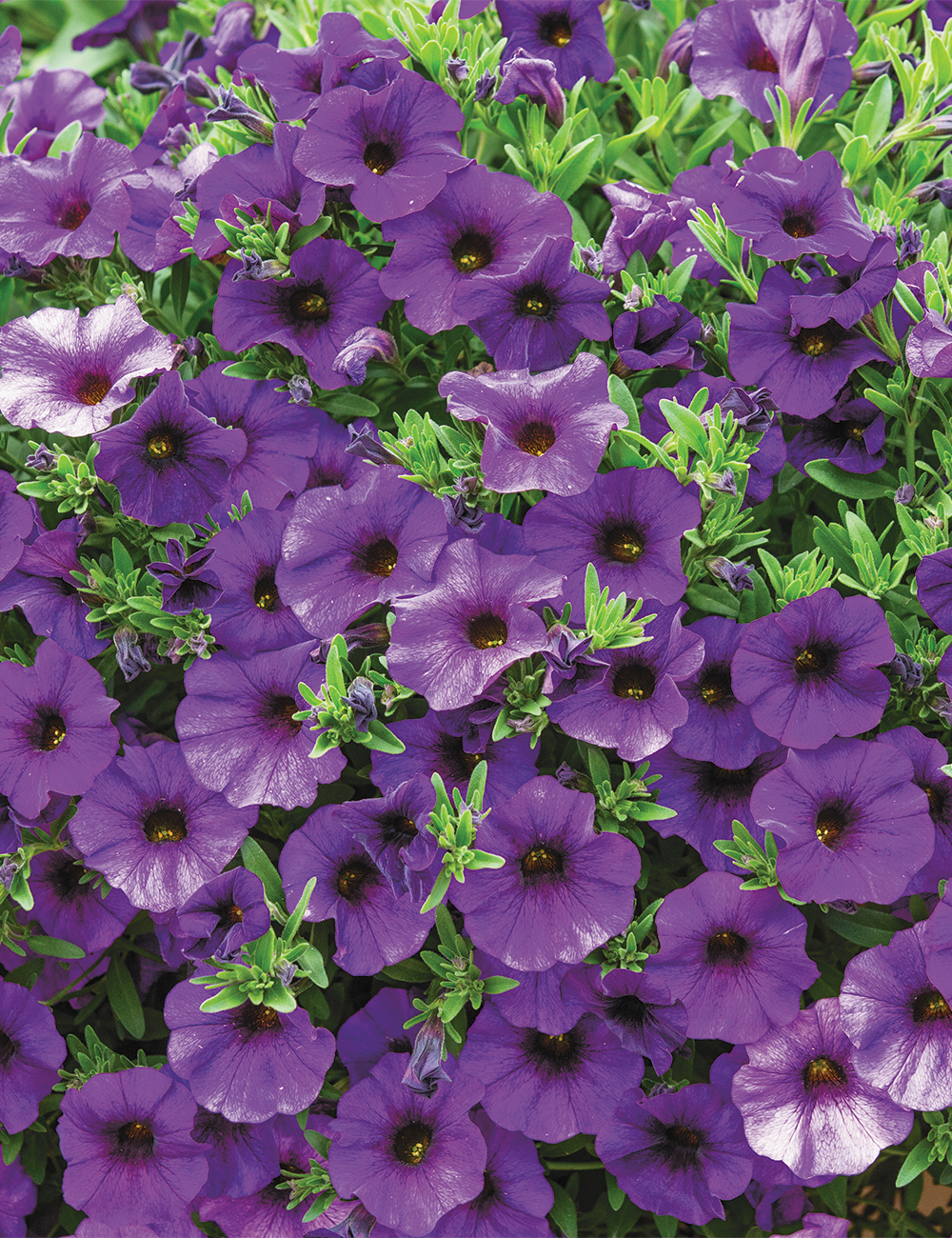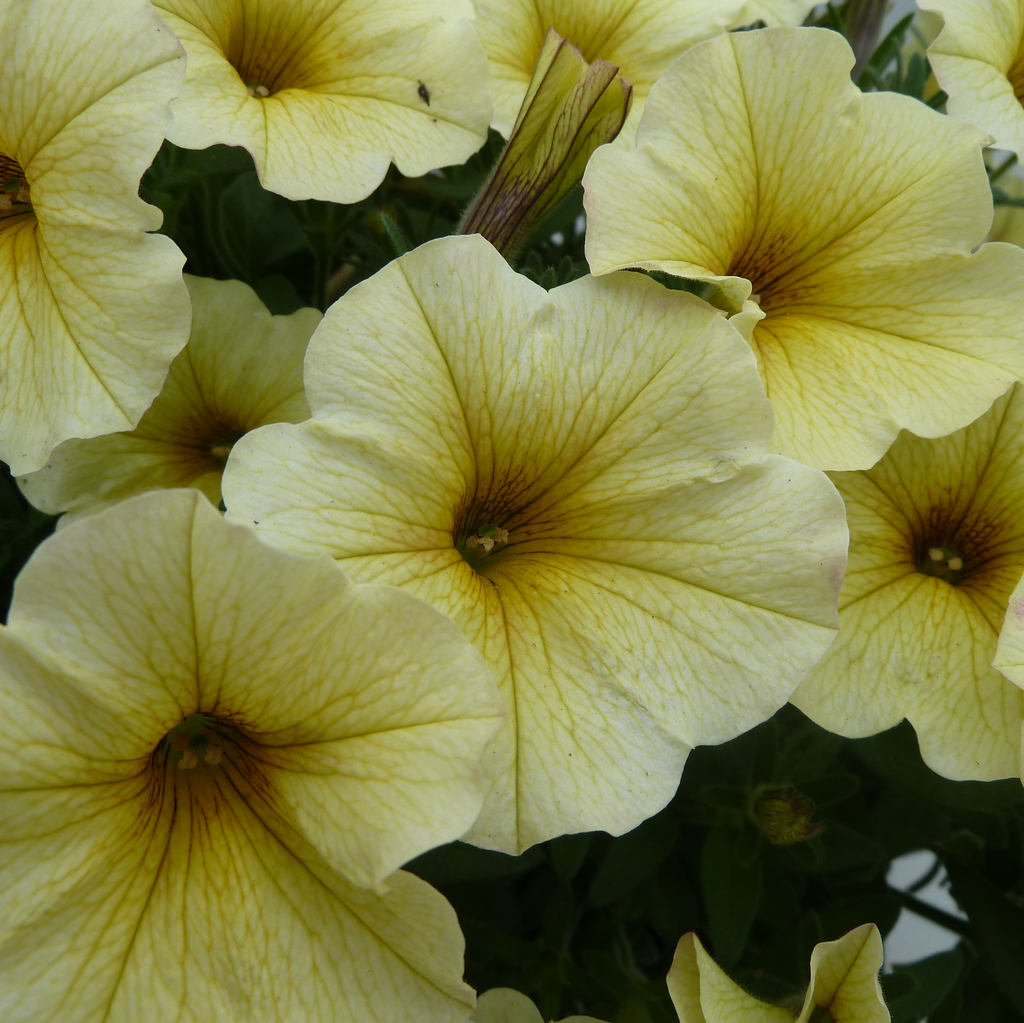

Grow Petchoa in a cool environment of 50-55F night temperatures.A second pinch may be necessary depending on the size and shape of the final pot. Pinching is recommended 5-10 days after transplantation.Plant it directly in the middle of your pot. If you are planting 4” pots, 1 plant per pot should be sufficient if you have enough time. Use a well-drained soil in your baskets and plant your starter plants deep, allowing the ellepot to be completely covered by the soil. We recommend planting 3-4 starter plants per 10” basket.Planting Supercal Premium Caramel Yellow Liners Use them as a drench according to each label’s instructions. The most common chemicals used to treat botrytis are Medallion and Banrot. You can prevent botrytis by allowing the plant to dry out between waterings, allowing for good airflow in your greenhouse, and spacing to allow the sun to penetrate to the soil level. This grey rot is usually associated with wet or humid conditions.

Supercal Premium Caramel Yellow are not prone to many diseases, but watch for botrytis while the days are short. To maintain optimum flower size, avoid spraying when flower buds are present and know that daminozide will change the flowers of 'SuperCal Terracotta' from orange to muted pink.” PestsĪphids, leafminers, whiteflies, and thrips are the primary pests attracted to Petchoa. Two to three applications may be required for finishing larger baskets and containers.

Greenhouse Product News published the following tips on using PGRs: “Plants respond well to foliar applications of daminozide at 2,500 to 5,000 ppm or paclobutrazol (Bonzi) at 20 to 30 ppm foliar spray or 2 to 3 ppm as a drench. Pinching, growing in cool conditions, and bright light are the best ways to control Petchoa, but they are vigorous and may need PGRs. We recommend six inches for 4” pots and eighteen inches for 10” pots. Space pots adequately to allow for light penetration and airflow between foliage of adjacent pots. SpacingĬan be grown pot tight in an 1801. Pinching is recommended 5-10 days after transplantation. If you are not going to grow in a cold house, you can achieve faster production by 10-14 days. Our production schedule listed below takes into account colder temps. SuperCals can even take heavy frost, which makes them a good choice for cold-frame production. This will help keep the plant compact and encourage a well-toned growth without the use of PGRs. Grow Petchoa in a cool environment of 50-55F night temperatures. Extra iron can be applied to promote good leaf color. General Growing Tips For Your Rooted Cutting Linerįor best results with Petchoa, we recommend using a constant feed program of 250-300 ppm N with an EC level between 1.5-2.0. Grow these plants for beds, hanging baskets, or as flowering cascaders in your combination pots. The early flowering time makes Petchoa a desirable addition to a spring program for those shoppers looking for color before your traditional plants are ready to sell. From the calibrachoa genes it gets vibrant colors that hold up well in harsh conditions. From the petunia side, Petchoas have strong roots and large flowers. Petchoa is a hybrid plant created by Sakata under the name SuperCal because it combines the best aspects of Petunias and Calibrachoas into one plant.


 0 kommentar(er)
0 kommentar(er)
